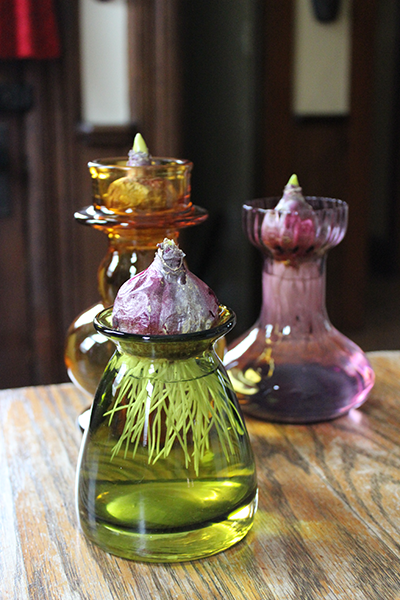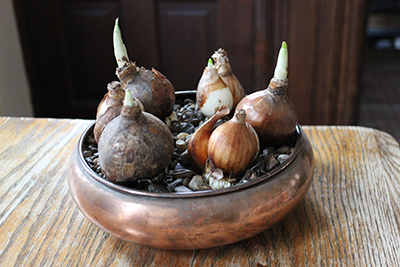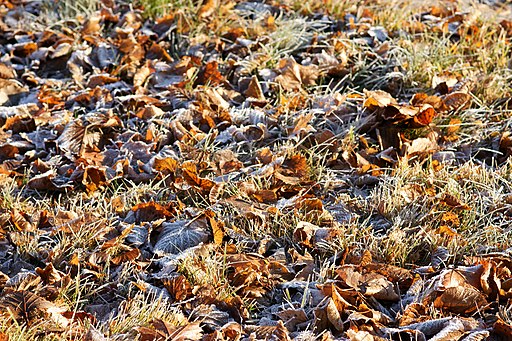To read more by topic or date, see our Newsletter Archives page.
October 31, 2022
“I cannot endure to waste anything so precious as autumnal sunshine by staying in the house. So I have spent almost all the daylight hours in the open air.”
– Nathaniel Hawthorne, 1804-1864, American novelist and writer, from his 1842 Notebook
No Tricks, Only Treats! Last Week for Fall Bulbs at Sale Prices!

|

|

|

|

|

|
|
tommies
crocus |
‘Double
Campernelle’ daffodil |
‘Sky Jacket’
hyacinth |
‘Red Velvet’
lily |
‘James R. Mann’
peony |
‘Queen of
the Night’ tulip |
We’re coming down to the end of our fall shipping season, and things are selling fast, but we still have some great heirlooms left at 25-40%. If there’s a variety that you’ve wondered about, this could be your chance to experiment. We’re expecting to be able to get orders placed this week shipped out within 1-2 business days so get your final fall orders in soon!
Save on:
7 peonies (these varieties won’t be offered again for at least 2-3 years),
8 crocus (they’ll fit anywhere),
36 daffodils (all deer-proof),
18 tulips (a pop of color),
9 hyacinths (deliciously fragrant outside or in),
6 lilies (stately and dramatic), and
17 diverse (including snowdrops and oxblood lilies).
See them all at our Bulbs on Sale page – and then order (or order more) for your most exciting spring ever!
Invite Your Friends to Our Big Sale
Share our season-ending sale with your garden friends by either (a) forwarding this alert to them or (b) sending them directly to oldhousegardens.com/BulbSale.
They’ll thank you for it and so will we!
Now’s the Time to Start Forcing Bulbs Indoors

|

|
If it’s too cold in your area for outdoor planting, perhaps you’d like to experiment with bulbs indoors! Forcing bulbs into winter bloom was all the rage in the 1800s, and we enjoy doing it for flowers in our office during the Michigan winters. You’ll find instructions on forcing hyacinths and tazettas on water, and most kinds of bulbs in soil, here at our website. Some daffodils we recommend especially for forcing are ‘Avalanche’, ‘Early Pearl’, and ‘Grand Primo’; ‘Gypsy Queen’ is one of our favorite hyacinths for winter blooms.
Tidying the Garden? Try to Leave Some “Messy” Habitat for Beneficial Insects

|
We’ve written in recent newsletters about the value of cutting back peony and iris foliage which may harbor pests and diseases, and raking leaves is a fall tradition. But as you’re preparing your yard for winter, don’t forget that many beneficial insects will need places to overwinter. As Justin Wheeler of the Xerces Society explains, many native bees use hollow stems of dead plants as winter shelter, and some butterflies like the eastern black swallowtail spend the winter as a pupa attached to stalks or twigs, so clearing too much plant matter can reduce their numbers. Many species of native bees need open (unmulched), untilled ground in which to build their nests. Bumblebees queens, on the other hand, burrow into leaf litter and loose soil beneath it for the winter, and fritillary butterflies use leaf litter to shelter their larvae waiting for violets to emerge in the spring. He suggests that we “provide safe havens by setting aside undisturbed patches of habitat allowing leaf litter, standing dead twigs/stems, or other ground cover to remain. ‘Wild’, unmanicured locations will provide the protected nooks and crannies that pollinators and other animals need for survival.”
You’ll find more information in his excellent blog article.
Share Our Gazette with a Friend
Please help us “Save the Bulbs!” by forwarding our newsletter to a kindred spirit, garden, museum, or group.
To Reprint Any Part of Our Gazette . . .
Simply credit www.oldhousegardens.com.











